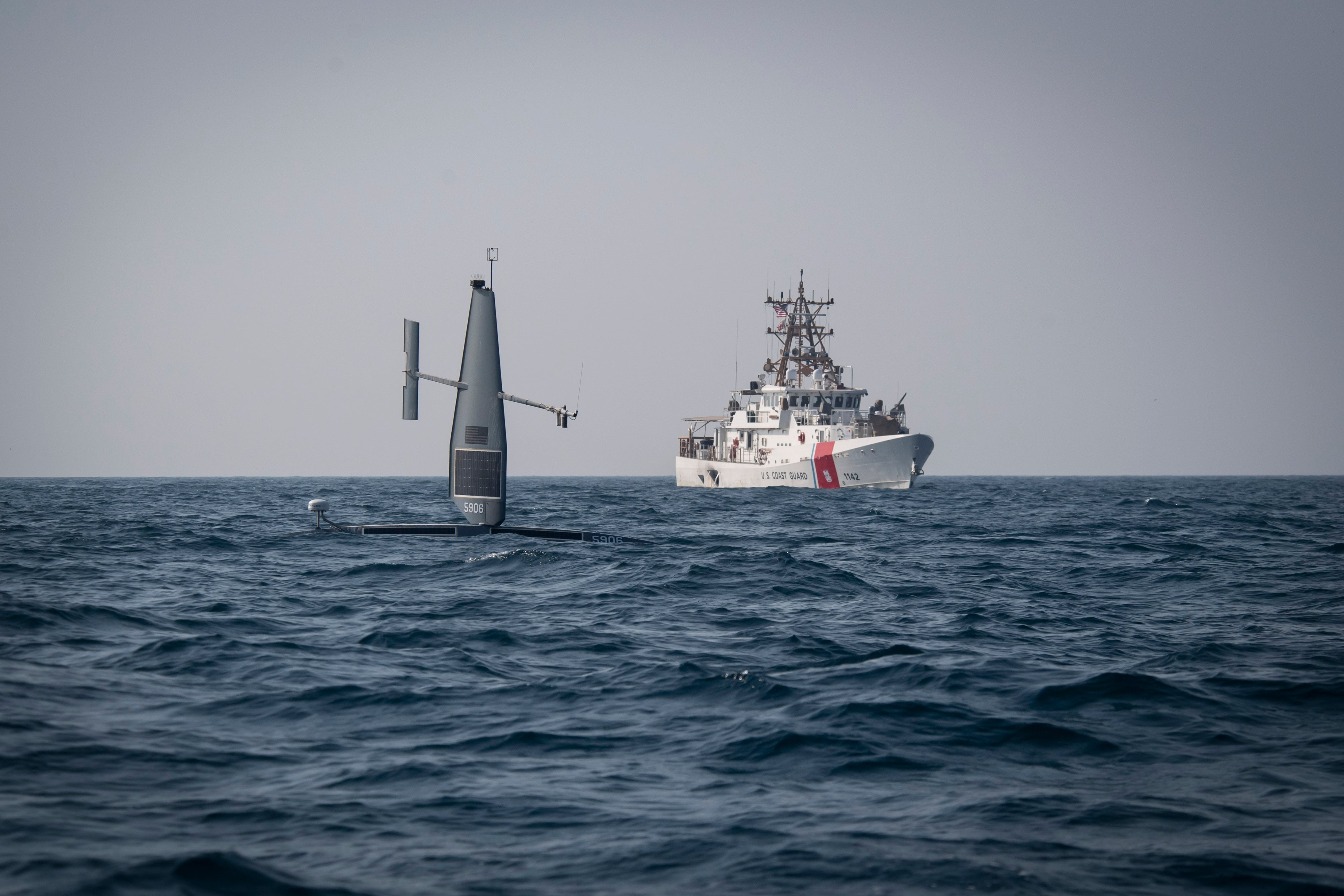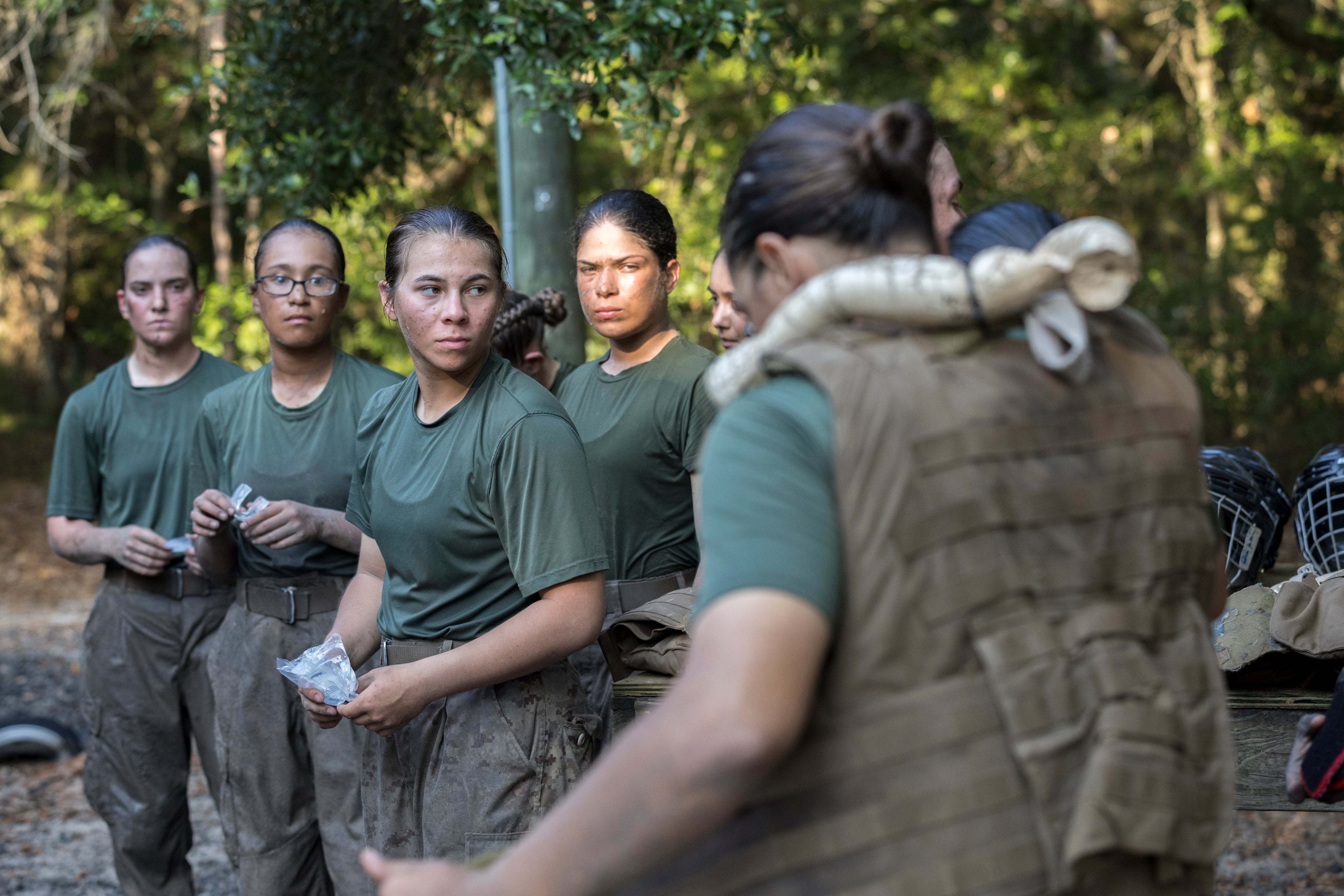Thanks to programs like Replicator, and incubators like the Defense Innovation Unit and the Disruptive Capabilities Office, the Navy is on the precipice of widespread adoption of uncrewed systems.
These systems bring with them the prospect of new technologies, new operational designs and, potentially, new business models. A key question for the Navy is how to signal to industry that the service has a thoughtful plan for the vast private sector investments needed to enable this transition, not to stifle innovation, but to avoid a feeding frenzy that the Navy cannot channel to best effect. One of the clearest needs for guardrails comes with how the Navy will execute command and control (C2) over the data, platforms, and networks that will underpin an ever larger and more lethal robotic fleet. As industry sees dollar signs at the dawn of robotic warfare, the Navy must consider whether it wants C2 to become a commercial offering before it finds itself having done so by accident. It may well be on that path already.
Three examples, from the sea to space, illustrate the Navy’s experimentation with partially privatized command and control, with attendant benefits and risks. Furthest downstream, Saildrone has taken a pole position in waterfront experimentation at FIFTH and FOURTH fleets in part because of a contractor-owned, contractor-operated model that enabled quicker and cheaper iteration. What the company’s website calls “mission-as-a-service” is effectively maritime domain awareness (MDA) for sale — the Navy buys the data stream coming off a vessel while the business operates the platform itself. This model has been invaluable as a route to fast testing on the water, though it has limitations, not least given companies’ likely opposition to sending company-owned vessels into high threat environments (e.g., the Red Sea or Black Sea today, maybe the South China Sea tomorrow). MDA for sale has helped the Navy move at speed, but it is unlikely to serve as an enduring model to achieve scale considering the Service is in the business of putting expensive platforms in harms way.
Midstream, Andruil offers an example of where some of the greatest potential uncaptured value is in the unfurling realm of mass distribution of robotic platforms at sea. As any Silicon Valley firm will tell you, selling hardware is good, but selling the digital rails on which those systems operate is better. Andruil’s Lattice architecture is one such example of an attempt to own the rails, or at least some of them. Advertised as “sensor, network, and system agnostic,” Lattice is an aspiring common architecture to enable large-scale robotic autonomy, something the Navy will surely need as it deploys hundreds of small systems. As with any software, the question for the Navy will be how much customization it can access, how quickly it can adapt underlying data, and how well it understands the algorithms that will translate commander’s intent into lethal autonomous actions. There is also a natural tension here — the more control industry has over the data, the more value it can extract. The Department of Defense has been here before, as with the debate over proprietary data rights surrounding the F-35.
Furthest upstream, we can see in Starlink another case of commercial value and commercial risks. DoD has announced a military version of the satellite internet service (Starshield) and the Navy is reportedly working with SpaceX on shipboard Starlink terminals. We have seen the potent efficacy of such systems in Ukraine, as well as the potential operational limitations that privatized networks can impose on missions that may jeopardize business (or personal) interests. Starlink is also a good example of a defense application derived from a non-defense service, which enables the Navy and DoD to shoulder less of the development burden. That matters greatly when you consider the relative collapse of defense R&D spending, down from 36% of global research dollars in 1960 to around 3% now. Where the U.S. defense sector was the engine of innovation in the Cold War, it is private industry today, and most often in search of commercial uses. Where the Navy can find common cause with commercial providers, it can ride on the coattails of an R&D enterprise that no longer orbits around the national security apparatus — though at a different kind of cost.
Individually, these efforts are technologically interesting and operationally significant. Collectively, they represent a potentially seismic shift in how the Navy thinks about command and control. This is neither “good” nor “bad.” The question at hand is whether a collective move towards a constellation of commercial C2 services, from deployed data streams to space-based networks, is strategic in design, or whether the Navy is inadvertently backing itself into C2 as a service. Intentionality is the core question, because the only way to manage risks associated with a commercialized C2 model is to know you are heading in that direction.
To date, the scale of naval uncrewed systems employment simply has not forced this conversation, or the associated business opportunities. In the air, the Navy fields MQ-4C Triton for aerial reconnaissance and MQ-8C Fire Scout for surface search and attack, but the numbers are relatively small and never constitute autonomous swarms beyond the span of human control. In other domains, the Navy has experimented for years with a small number of larger systems. On the surface, DARPA-initiated Sea Hunter is the latest in a line of experimental uncrewed surface vessels. It is joined by a modest family of larger uncrewed surface vessels pioneered by OSD’s Strategic Capabilities Office under the moniker of Ghost Fleet Overlord. Undersea, the Orca extra-large undersea vessel is inching towards fielding, and DARPA recently completed testing on a large design called Manta Ray.
What is new, as exemplified by Replicator, is a dash towards fielding thousands of smaller systems as a hedge against China and (ideally) as a bridge while the Navy pivots towards a more distributed and sustainable hybrid fleet design. As a result, the question of who owns C2 will only become more pressing. For industry, C2 as a service is novel, operationally valuable in the near-term, and theoretically lucrative in the long-term. For the Navy, the near-term attraction of outsourcing sensing, maneuvering, and networking to field more uncrewed systems faster must be balanced by the risks of entrenching a privatized C2 structure in an increasingly lethal architecture without a bigger plan. C2 as a service has some novel attributes, but it is not without its perils.
Joshua Tallis is a Senior Research Scientist at the Center for Naval Analyses and the author of The War for Muddy Waters. From 2021-2023 he was the CNA advisor to the Sixth Fleet commander. His views are his own and do not represent those of CNA or the U.S. Navy.




